share on
In this exclusive feature, leaders from foodpanda Malaysia, Sinar Mas Mining, P&G, and more share what employee wellbeing means to them, and how they are actively taking charge of the wellness conversation in their organisation.
From the perspective of a people manager, employee wellbeing is ingrained in the way they take care of their team – from ensuring they aren’t working after-hours, to checking in on them at lunchtime, or signing up for an online fitness class together. From the perspective of an employee, they often look for practical benefits that suit their stage of life and lifestyle, perhaps flexible working hours, medical benefits, and even financial support. Evidently, employee wellbeing has personal significance to each individual.
HRO acknowledges that understanding the entire scope of employee wellbeing and its complexities is no easy feat. So we checked in with seven leaders who share what employee wellbeing means to them, and how they are actively taking charge of the wellness conversation in their organisation. Here's what Arina Sofiah uncovered through the conversations.
eBay believes it is “totally OK to not be OK”
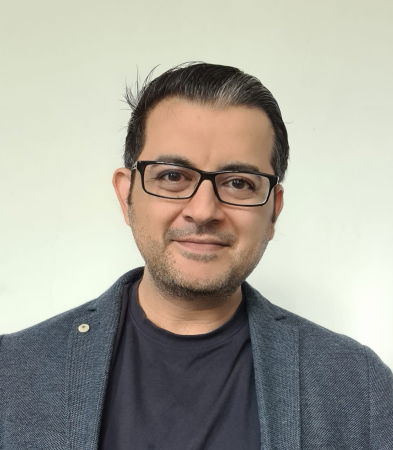
Wellbeing strategies must encompass holistic wellbeing, says Sajjad Parmar, Head of Reward – APAC, eBay. This includes four pillars that impact each of us – physical, emotional, financial, and community/family/societal. In fact, eBay has been on this journey of holistic wellbeing for a few years.
“All our internal offerings around benefits and wellness are geared towards the four strategic pillars,” he says.
In his experience, there is a strong overlap between benefits and wellbeing programmes. As such, eBay’s wellbeing strategy looks at core offerings and lifestyle offerings so as to provide a suite of benefits to different demographics – this will allow for specific customisations.
Is providing such extensive coverage a tech-sector phenomenon? No, says Parmar. “I don’t think it’s possible to position employee health by industries. Many companies have done an amazing job specifically around employee health and wellbeing, and many are in the process of revamping their support.”
He points out that almost 50% of the workforce has experienced some form of decline in emotional health, leading to a direct or an indirect impact on financial health. “There are cases of employee burnout and emotional decline almost everywhere.”
Given this landscape, eBay emphasises regular engagements with employees, people managers, and leaders, to ask what topics are of interest to them. It also engages local HR teams to help curate emotional wellness sessions and works closely with its employee assistance programme provider to lean in on topics. “It is a very hands-on approach involving multiple stakeholders.”
The next step in the evolution of eBay’s wellness support is to find ways to get consultants into its offices for face-to-face sessions and allow employees to book time with them. This is planned to be piloted in markets where the office headcount supports it. “Leaders in each market have made it clear that it is totally OK to not be OK. Having an open culture enables us to do all of these.”
One of the reasons leaders at eBay have been supportive from day one is because of the mindset of “making sure that the investment in time and cost meets the intended purpose”.
It is crucial to make sure that interventions are finding the right audience, that the solutions are practical, and they help the employees in the way that maximises the benefit.
“What we don’t want is to do something and have it end up as a waste of time for people.”
On that, he explains normalising discussions around wellness – especially emotional – will take time. Any mindset or behaviour related to change takes time, so if we start now, it will take 12-18 months before seeing any changes in attitudes and approaches, he points out. “What is important is to constantly keep up the ante on the conversations,” he says. “This means normalising wellness conversations by having them regularly in public forums, giving employees access to specialists, and getting leaders to walk the talk.”
At foodpanda Malaysia, wellness is about thriving, not surviving
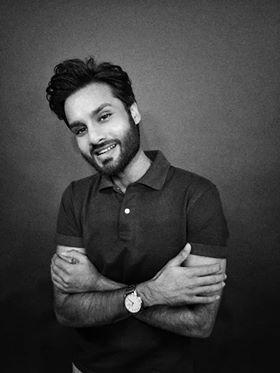
Wellness, at foodpanda Malaysia, is not limited to practising healthy habits, but it also determines the difference between thriving or just surviving, shares Ajay, Head of People and Culture. Those who thrive produce better results all around – better work-life balance, better ideas, better productivity, better work ethics, and so on. Therefore, employee health and wellness initiatives are split into four areas of focus: physical, mental, social, and financial wellness.
On the physical and mental fronts, programmes include virtual group exercises, pulse checks, and awareness campaigns around mental health. A safe path has been created for employees to access available resources such as talks, private consultation sessions, podcasts, and webinars.
“Understanding that human beings are social creatures, we also curated our engagement initiatives to include social wellness,” he says. This provides a fun platform for employees to connect through games, chill-out sessions, care packages, and employee resource groups. Mindful of the direct correlation between one’s financial health and morale, the group has also just introduced its financial wellness series.
Having experienced the process of implementing such initiatives, Ajay opens up about the challenges faced. One of the challenges was participation as most activities were hosted during working hours. Yet, he remains positive that as word continues to spread, they will gain more traction over time.
Another inevitable challenge was that physical interactions were “close to none” in the past two years. Interestingly, while not being able to reach out to employees physically, foodpanda became more creative in braiding together the digital and physical employee experience. Thus, the group enjoys a “high success rate” for its hybrid initiatives.
As foodpanda’s culture promotes being feedback-friendly, it is important to understand what works and what doesn’t, and what it can do to improve in ongoing initiatives. Through feedback from internal surveys and eNPS (employer net promoter score) surveys, Ajay and his team leveraged the data to form the next course of action(s). This helped the organisation improve its eNPS in the spirit of embracing two of its values – get 1% better each day, and create magical experiences.
While on the topic of improvements, he believes there is an underlying stigma that wellbeing strategies need to be tangible (i.e., gifts and financial-type aid) to be well-received. He explains:
I commonly equate HR to being the heartbeat of the organisation.
Placing employees first would mean that the type of support extended should be for the benefit of employees in the long run – in forms that are most intangible – such as education/knowledge that they can leverage to propel themselves in becoming better versions of themselves.”
Combining hearts (soft wires) and minds (hard wires) at Sinar Mas Mining

At Indonesia-headquartered Sinar Mas Mining, part of the Sinar Mas conglomerate, employee wellbeing is prioritised through empathy in all processes, explains P.Swasono Satyo, Chief Human Resources Officer. As such, the Group has massively invested in six dimensions of wellness and wellbeing: environmental (comfortable working space); intellectual (upgrade of employee skills); physical (platforms for employees to partake in their hobbies); financial (appreciation for their performance); social (developing the community in areas of education, health, and more), and spiritual (mindful activities for a more balanced lifestyle).
In the past two years, the company has spent around US$10mn on employees’ health and engagement, and US$2mn on COVID-19-related support, such as vaccines, boosters, soft loans, mental health counselling, and more.
When employees feel valued and cared for, they will do their work with strong motivation, a deep sense of meaning, and extraordinary engagement.
But the focus on wellbeing doesn’t just stop at employees; rather, Sinar Mas Mining creates meaningful impact all around – by funding donations for the local society, and bringing in 1.2 tons of food supply and COVID-19 vaccines for inhabitants living near coal mining sites.
Being such a large entity does come with its share of challenges. To start with, Sinar Mas Mining is a holding group managing more than 100 diverse business units. Moreover, HR leader Satyo recently received the mandate to support and lead the HR department of the financial group pillar, Sinar Mas Multiartha, which holds more than 250 companies. This comes to a grand total of over 300 business units with 80,000 employees that the HR teams, led by Satyo, manage. As the business shifts and expands to financial tech, this becomes the most challenging aspect, the leader admits.
He is also tasked with creating 300 C-level talent to achieve the company’s revenue goals for 2026, as well as 1,000-2,000 tech and coding talent, through Techconnect Academy, its digital people factory. In this mandate, he saw the opportunity to transform the brand to make it more relevant to win over the STEM talent in the market.
“Thus, we are now transitioning our brand’s name to Techconnect, while transforming our task workers (mining, energy) to knowledge workers (data science, tech, and beyond), using our learning platform called MyLearning, and development programmes for all employees.”
Looking ahead, this CHRO firmly believes that wellbeing can be a major source of resilience for the workforce, driven by the six dimensions listed above. “If we are secured in the majority of those dimensions, we can cater to our daily needs and routines and be ready to encounter many unexpected hurdles of everyday life,” he concludes.
Societe Generale: Busting stereotypes on what wellbeing means to the banking sector

The banking industry has long been known as competitive, hectic, fast-paced, and performance-driven with less emphasis on ‘care’. But Societe Generale has safely steered clear of this image. “Employee wellbeing has been very close to our heart, even before the pandemic,” shares Mukta Arya, Managing Director, Chief Human Resources Officer, APAC.
If anything, the company’s approach has been further refined during the pandemic, wherein a virtual or hybrid team set-up, proximity managers emerged as the custodians of employee wellbeing and team dynamics, Arya points out. They can be the first to “diagnose any burnout and struggle” while directing team members to appropriate resources.
Among many initiatives, Societe Generale provides workshops to sensitise managers to potential health concerns, as well as workshops for line managers on supporting working parents to effectively manage the responsibilities in the workplace.
Awareness of wellbeing, as well the attitude and skill set to respond to different circumstances, is built through its monthly “Bounce Out” webinar series. This aims to educate staff on various wellbeing and mental health matters, ranging from stress management, to mindfulness, to resilience.
With the results coming in through such initiatives, Arya cautions: “After spending tremendous efforts on formulating and implementing our wellbeing strategy, it is natural for us to be pleased and celebrate the achievements with the initial positive feedback from the employees.”
However, this leader recognises the greater challenge lies in how to continuously measure employees’ sentiment toward wellbeing strategies. For instance, Societe Generale has leveraged its annual employee engagement survey to do a pulse check on how well its strategy has been received. To understand the needs of specific employee groups, extensive focus group research with regional female staff was conducted, thereby helping to make concrete action plans.
“Don’t assume your employees know everything,” is another important lesson she shares with us. Having a myriad of good intentions, an ambitious strategy from the management, and solid wellbeing offerings, doesn’t guarantee the message and availability of resources have been well cascaded across different levels in the company.
More often than not, employees may not be aware of the ‘helping hands’ available and easily come to an impression that ‘there is nothing to help’.
Do not underestimate the power of reminders (and don’t hesitate to repeat yourself), she encourages, as such publicity is pivotal to a successful wellbeing strategy.
On the other hand, it is equally important to communicate that the company has thoroughly considered employees’ feedback, even if not all of it has been accepted. The essence is to show the company is listening to and valuing employee feedback so that they feel free to speak up.
Marriott International wants employees to ‘take care’
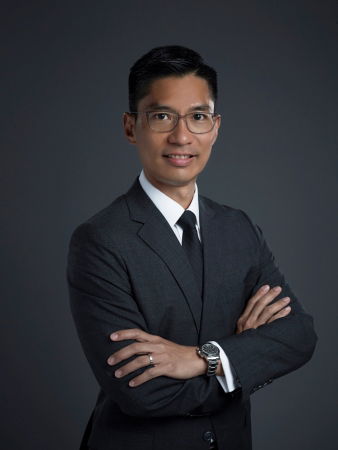
A huge misconception is that employee wellbeing is HR’s job alone. In fact, it’s everyone’s job, and the key to a meaningful wellbeing strategy is embedding it into the company culture, affirms Regan Taikitsadaporn, Chief Human Resources Officer, Asia Pacific, Marriott International.
With this joint-ownership philosophy in mind, through its ‘TakeCare Culture’, Marriott encourages associates (employees) to look out for their physical and mental health, so that they are in the strongest position to help the people around them. Leaders and managers are held accountable for employee wellbeing, and ensuring the TakeCare culture thrives. As such, leaders need to lean in and recognise the needs of associates. “And so, we ask our leaders to be open to conversations about needs like shift preferences and working arrangements.”
Marriott also has a network of TakeCare Champions comprising volunteers from the organisation, who are empowered to initiate wellbeing programmes at the local level.“Putting people first has been one of our core values for nearly 95 years,” he says.
One example from the pandemic is recognising the time spent by working mothers on household responsibilities increased disproportionately compared with other groups. That meant, in places such as Australia, Marriott extended flexible working options to frontline staff, as well as provides confidential helpline and counselling services.
In addition, Marriott’s hotels play an important role in driving physical wellbeing initiatives. For example, yoga classes are available at select properties to help associates relax and enhance focus. Marriott also organises an annual charity event in APAC called ‘Run to Give’ to raise funds for local charities even as associates stay active.
The organisation has been running its own app-based wellbeing challenge since 2019. ‘TakeCare Level30’ helps associates form positive daily habits related to personal wellbeing, connecting with others, and caring for the environment. It also partnered with meQuilibrium to develop a clinically validated tool that offers highly personalised digital coaching sessions. “The scheme is proof that when you empower associates with the right tools, they embrace these tools,” he emphasises. As such, Marriott has seen more than 4,000 associates enrolled, and associates who have participated have seen improvements in their resilience, engagement, sleep, and behavioural health.
Learning from the pandemic, Regan reminds all leaders to look beyond the consequences of the bottom line and remember the impact (of policies) on people. “This meant asking if our benefits were still relevant – were we offering the right things, at the right time, to the right people?”
No wonder, the hospitality giant regularly reviews its wellbeing benefits to make sure they are still relevant and are changing with the times.
Our desire is to ensure our employees feel respected and comfortable enough to talk about their wellbeing needs, and are able to practise their wellbeing priorities in both their work and personal lives.
Livspace’s wellbeing programme drives purpose through meaningful work
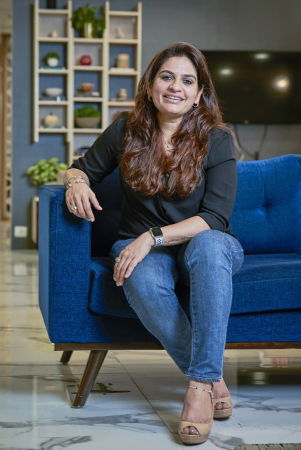
At Livspace, Joyita Poddar, Chief Human Resources Officer, believes the wellbeing of employees encompasses everything that gets them motivated, and to feel a sense of purpose and engagement. “This matters to us, and we take it seriously,” she says. “We aim to boost employee morale by aligning individual/team goals to organisational goals, thereby enabling employees to find purpose in their work experience. When individuals work in productive and engaging teams, it motivates them to exceed expectations.”
Given how the new ways of remote working have blurred boundaries between work and personal life, Poddar notes the pressure of digital isolation takes a toll on mental health. Thus, improving the overall employee experience while working remotely is very important as well.
In the interior design space, employees have to meet customers on a daily basis. To support this, the team has invested in digital collaboration tools for employees. “We have invested in Canvas, our proprietary platform, which allows digital interactions with customers, as opposed to physical meet-ups, which makes it more convenient for our employees during the pandemic.”
Such tech enablement is supported by an ‘employee-first’ mindset that gives rise to multiple HR initiatives around insurance, the work environment, and health and compensation programmes, all developed keeping in mind the industry the organisation serves, and the talent it has on board and aims to hire.
One such example would be the launch of LivCare in India during the pandemic. From setting up a war room to ensuring that every employee felt cared for across all locations, the company provided financial assistance, an employee assistance programme, and online fitness programmes.
"We are growing fast and the biggest challenge is to be able to attract people with the right mindset and skills fast enough,” she explains. No wonder then the company’s strong future-focused approach towards freelancers/gig workers through its ‘Livspace Partner Programme’. Here, Livspace works with a huge community of freelance designers and supports them with complete access to its proprietary online tools, vast catalogues of furniture, decor, products and services, and an immensely large network of community managers, vendor managers, category managers, and service partners.
This trust placed in its community of partners is just one of the many ways that Livspace drives a culture of wellbeing and meaningful work. “We have broken the myth that HR drives culture. We all play a part and some key metrics are part of all leadership OKRs. HR runs in partnership with business and most of our programmes are meant to drive a business outcome,” she says.
Also, keep it real and keep the communication open. Everyone respects a decision if they know the ‘why’ behind it.
To drive this, Livspace conducts quarterly pulse surveys with its employees across geographies and those who are part of its partner network. No matter where employees are working, the biggest priority for the group is to ensure it doesn’t lose the connection with each other.
Healthy bodies, happy minds, and meaningful hearts at Procter & Gamble
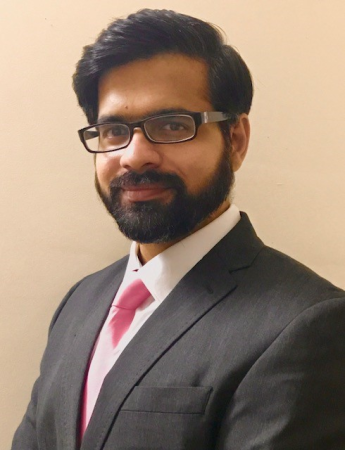
A physician by training, with specialisation in occupational health and healthcare management, Dr Anurag Apte, Senior Director Medical, Asia Pacific, Middle East and Africa, Procter & Gamble (P&G), works closely with the region’s medical and HR teams to establish sustainable people-first programmes.
This emanates into three essential factors for an effective wellbeing strategy. First, is the importance of taking a holistic and proactive approach to mental wellbeing. “From a prevention standpoint, we need to acknowledge the strong mind-body connect and take a holistic approach to address mental wellbeing.”
The second is the benefit of driving a consistent culture of mental wellbeing throughout an entire organisation. “Change becomes effective when leaders – from senior management to managers and supervisors – champion the topic on mental wellbeing and drive conversations to create psychological safety for employees.”
Third is the philosophy that healthy people equals a healthy business. The intention to focus on wellbeing is as integral as any other part of building a team and running a business. As such, a big part of P&G’s strategy is in building the capability of its managers and supervisors, so they can play a significant role in taking care of their teams.
“We have started integrating wellbeing discussions into our employee career conversations where each manager and employee must have a discussion about career, goals, and how best to support their wellbeing on a regular basis,” Dr Apte explains.
With that in mind, P&G’s employee wellbeing strategy focuses on three core areas: ‘Healthy Body’ which embraces holistic self-care, nutrition, and ergonomics; ‘Happy Minds’, which builds resilience within teams and improves their mental wellbeing; and ‘Meaningful Heart’, which fosters a better sense of community within teams.
Dr Apte admits:
The COVID-19 pandemic posed a major obstacle in our traditional organisation programmes, but I believe that with challenges come opportunities.
During this period, the strong focus on energy management continued, by coaching and helping employees to take care of their physical selves and leveraging technology and social connections to drive momentum on this.
Today, while P&G is well-equipped for virtual working, it also believes that frequent connections in offices are critical for culture building, people development, and for collaboration, problem-solving, and invention to drive the business. “Wellbeing resources will need to adapt accordingly to tailor to the different needs of every employee. External uncertainty will continue; we will have to ensure we make our employees agile, resilient, and ready to face these uncertainties,” he says.
Signing off he reminds us that often, people have the impression that wellness programmes come with a hefty price, but there are ways to keep them affordable. “It often boils down to the intentionality of the programme and little gestures that promote a healthy work-life balance. Remember, small incremental steps lead to a more transformational larger change,” he prompts.
“Planning for programmes may be time-consuming, but by taking the time to have these conversations and broaden our capabilities and perspectives, we can truly curate programmes that produce results and make a difference for our people, business, and the community at large, in small and meaningful ways.”
This article first appeared in the Q2 edition of Human Resources Online's Southeast Asia e-magazine. View a copy of the e-magazine here, where you'll find power-packed features and interviews with leaders from Singapore, Indonesia, Thailand, the Philippines, Vietnam, Malaysia, and more!
Lead Image / Shutterstock
Images of interviewees / Provided
Follow us on Telegram and on Instagram @humanresourcesonline for all the latest HR and manpower news from around the region!
share on
Follow us on Telegram and on Instagram @humanresourcesonline for all the latest HR and manpower news from around the region!
Related topics



